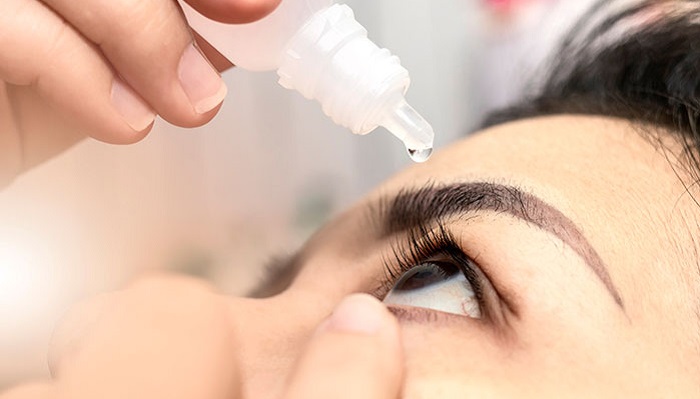So what’s the most sensitive part of your body?
Is it skin, tongue, or brain the big boss?
Apparently not, at least in general.
How does it feel when a grain of sand or dust falls on your eye?
It burns and itches, and you suffer a lot for the next few minutes. Right? Similar is the dry eye, technically called ‘Xerophthalmia’ by doctors.
Keep reading to explore more about this condition.
Common symptoms
Most commonly, people with dry eyes face redness, pain, stinging or gritty sensations in one or, more likely, both eyes. The allergic symptoms will also exist if the dry eye has arisen due to some underlying infections or hypersensitivity.
Risk Factors
Dry eyes, aka Xerophthalmia, are a chronic condition in most patients. But it can precipitate as an acute disease as well. The main pathogenesis comprises excessive dryness of the eyes due to less secretion of tear fluid by the lacrimal glands or abnormally fast evaporation of tears from the eye surface, maybe due to dryness of the environment.
The most common etiologies behind this mechanism may vary. However, let’s see a few of the most prevalent ones in the clinics.
- Aging: Tear production declines with the advancement of age. Probably this is why dry eyes are most common among people over 50 years of age. To delay this situation, older individuals with already existing other risk factors are advised to use artificial tear drops for maintaining lubrication and humidity.
- Medications: Certain classes of drugs, like antihistamines, antidepressants, diuretics, beta-blockers, etc., decrease the secretion of mucus which is a vital component of tears. You should talk to your doctor if eye itching starts after taking any medications.
- Screen use: Prolonged screen time, especially the blue light emission from digital screens, is extremely harmful to our eyes. People forget to blink when staring at a screen, and thus, dryness of the eye follows.
- Laser surgery: Laser surgeries are great for restoring vision. But nerve damage may happen accidentally interfering with the production of tear fluids. This is usually temporary and heals spontaneously.
- Menopause: pregnancy, menopause, etc. events often manipulate the gonadal hormones, and this imbalance will affect the production of teardrops too. Hormone replacement therapy doesn’t work in this situation.
- Vitamin A deficiency: Vitamin A is vital for healthy, efficiently working eyes. Any dietary deficiency of vitamin A or metabolic disorders would lead to various ophthalmic syndromes like night blindness, dry eyes, etc.
- Wind exposure: Hard-blowing, cold winter winds lead to quick evaporation of tears, dryness of eyes, and chronic dry eye syndrome.
- Blepharitis: This is an inflammatory condition of small oil glands around your eyes. Oily secretions and small oily flakes might accompany dry eye symptoms.
- Autoimmune conditions: Sjogren Syndrome is a dangerous autoimmune syndrome where the patient’s white blood cells attack their own secretory glands like salivary glands and lacrimal glands, thus disrupting the tear production itself.
- Allergies: In allergies, eyes get red, itchy, watery, or dry alternatively. This is usually a chronic condition.
- Dehydration: Not drinking enough water might indirectly lead to dry eyes, dry mouth, dark-colored urine, etc.
- Smoke: Both direct/ active and secondhand/passive Smoking might lead to dry eyes.
- Weather factors: Dry air, low humidity, etc. weather factors may also contribute to developing dry eyes.
- Contact lens: Using a contact lens for the first time might feel irritating. And also, long-term use of contact lenses cuts the oxygen supply to the cornea, leading to chronic dry eyes.
What are the techniques used in treating Xerophthalmia?
Okay, now the treatment is largely based on symptomatic relief and general eye care. For example, the following strategies are implemented
- Avoid Dry places like mountains, deserts, etc. Smoking (first-hand and passive alike)
- Usual treatments include Eye drops and other meds: Artificial tear drops containing sugars and dry eye spray are used to humidify the eye.
- Eye strain relief: Avoid looking at screens for a long time. Look away every 20 minutes and look at Greenery. Also, blink rapidly to increase tear secretion and spread the tear fluid across the surface.
- Glass protection: Sunglasses and contact lenses infused with fluids are used for protection against high winds and cold.
- Dietary supplement: Foods rich in Vitamin A (eggs, carrots, fish, spinach, broccoli, and peppers) are great for fighting dietary insufficiency. Omega 3 fatty acid supplements might also help in improving chronic dry eyes.
So that’s all. Visit your doctor as soon as you feel irritation in your eyes.
Stay healthy!


















